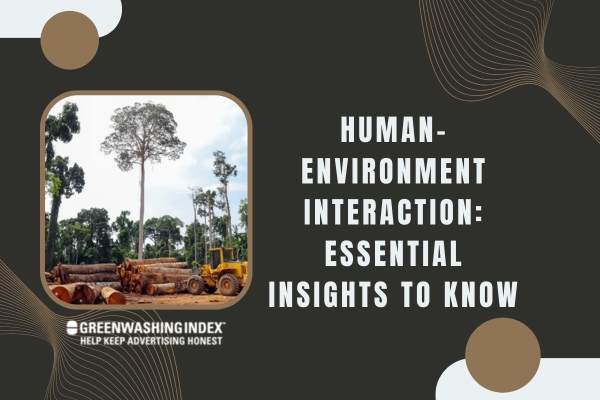Imagine walking through a forest and noticing the ripple of the trees as they dance with the wind. That’s nature at work. But did you know that we, as humans, are part of this dance? The movements we make, the things we build, and even the air we breathe are all part of this great tango we call human-environment interaction. It’s a complex but beautiful connection that we share with Mother Earth. And in this dance, every step we take matters.
When we talk about the types of human-environment interaction, we’re really looking at all the ways we touch our planet – and it touches us back. From the water we drink to the roads we pave, everything we do is a conversation with the natural world.
Our dependence on the environment gives us life, but we also adapt and change our surroundings to suit our needs. How we manage this relationship is key to our survival and the health of our planet.
What You’ll Fetch From Reading This:
- Crystal-clear understanding of human-environment ties
- These eye-opening examples of how we rely on Earth
- Simple yet powerful explanations of our environmental impact
- Actions we can take for a sustainable future
- Facts that will make you see the world differently
Defining the Relationship: Human Environment Interaction
Human-environment interaction is a term that describes how people and the world around us work together and affect each other. It’s a pretty simple but deep idea.
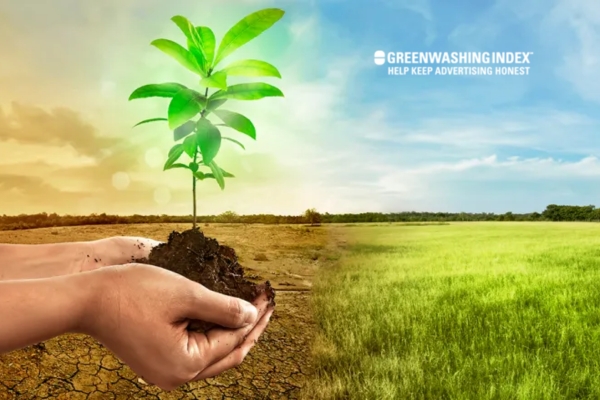
When I talk about human-environment interaction, I’m looking at the ways we, as people, relate to everything around us in nature. Imagine it like a two-way street. On one side, you’ve got humans who build houses farmland, and travel from place to place. On the other side is the natural world, with its forests, rivers, animals, and weather.
This connection between society and our natural surroundings has always been there. Since the first person picked up a stone to use as a tool, we’ve been interacting with our environment. We use the resources the earth gives us, like water, wood, and minerals, to live our lives. But it’s not just about taking; it’s also about how we change the land around us and how, in turn, these changes affect us.
Think about when we cut down trees to make space for buildings. We’re doing something to our environment. But then, maybe we get flooding because there are no more trees to soak up the rain. That’s the environment responding back to us. This give and take is what I mean when I talk about the relationship part of human-environment interaction.
The Foundation of Ecological Footprints
Now, let’s chat about ecological footprints. Picture an ecological footprint like a mark left on the sand, but instead of sand, it’s the world, and instead of a foot, it’s all the things we do that affect the planet.
Every single thing we do, from driving cars to throwing away plastic, leaves a mark. This footprint shows how much we impact the earth. It’s a vital part of understanding human-environment interaction because it puts things into numbers and pictures we can look at. It shows us how much we take from the earth and how much waste we leave behind.
The size of our ecological footprint can tell us if we’re using more than our fair share of what the earth can give. When our footprints get too big, it’s like a warning sign that we might be putting too much pressure on our environment. It’s like hearing the ice crack under your feet on a frozen pond—you know you need to tread more lightly.
These ecological footprints play a huge role in how we think about sustainable human-environment practices. If we know our footprint is too big, we can look for ways to make it smaller, like recycling more or using less water.
By monitoring and managing our ecological footprints, we’re able to be more kind to our planet, ensuring that we don’t take more than it can give and that there’s enough left for the future.
And that is the heart of human-environment interaction: understanding how our everyday actions add up and how we can live in harmony with the world around us.
Also Read: Mattress Disposal: Easy Steps for Eco-Friendly Solutions
The Interconnected Systems That Define Our World
Understanding how we interact with our environment is like looking at a big, complex puzzle. The way we live, the things we build, and how we group ourselves into societies all play a part in this. This idea is known, in simple terms, as human-environment interaction. Now, let’s dive a little deeper into our role in this relationship.
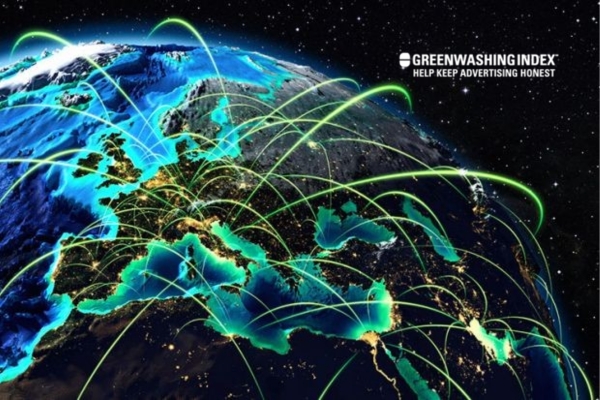
Human Social Systems
Our social structures – things like cities, economies, and governments – are like living things that grow and change. They don’t exist all by themselves; they are deeply connected with the world around us. Here are a few ways they link with the environment:
- People and the land: Where we live often shapes how we live. For example, near the ocean, folks might fish for a living, while in the mountains, they might farm in the valleys or mine in the hills.
- Weather and work: Weather patterns can decide what jobs are available. If it’s wet a lot, farming might be good. If it’s sunny, maybe solar power becomes a big deal.
- Disasters and decisions: Sometimes bad things, like floods or fires, force communities to change their ways. Maybe they learn to build stronger houses or manage forests differently.
- Resources and rules: The goodies we find on earth, like oil or gold, can lead to new laws or even battles over who gets what.
In these ways and more, the way we humans arrange our lives has a lot to do with what the earth gives us and what it throws our way.
The Environment And Ecosystems
Think of an ecosystem as a spider’s web. If one part moves, the whole web feels it. Just like in the web, everything in nature is hooked together. Here’s how ecosystems and humans can affect each other:
- Plants, animals, and people: We need plants for food and oxygen; animals might need those plants, too, and animals can be our food or helpers. It’s all a big circle of life.
- Waterways: We drink water, fish swim in it, and plants need it to grow. We’ve got to keep the water clean for all of us to be healthy.
- Building our world: When we build homes or roads, we might take space from animals or plants. Sometimes, that’s okay, but other times, it might push them out or even harm them.
- Trash talk: The stuff we throw away has to go somewhere. If we’re not careful, our garbage can end up hurting nature.
These connections show that every little choice we make, from what we eat to where we live, ties back to the bigger picture of the world’s health.
Human-environment interaction is all about the give-and-take between us and Mother Nature. From the societies we build to the ecosystems we depend on, it’s clear that every one of us has a part to play in this grand balancing act. Whether it’s how we use the land or take care of the water and air, our future depends on understanding these ecological connections and building sustainable relationships with our planet.
Also Read: Old Electronics Disposal: Ultimate Recycling Tips Guide
Exploring The 3 Types Of Human Environment Interaction
When I talk about how people and nature get along, I’m diving into the “human-environment interaction.” This is a fancy way of saying how we live, depend on, and affect the world around us. Let’s unpack the three main ways we do this.
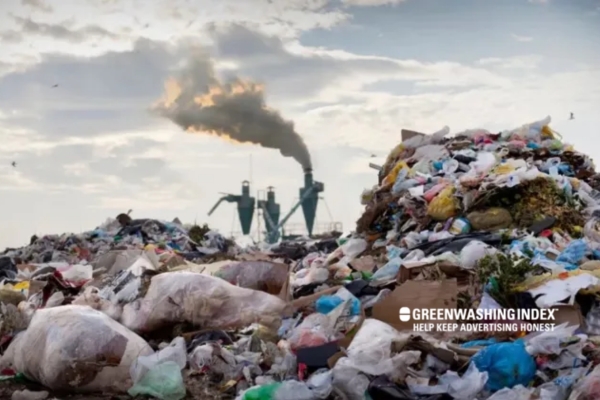
1. Dependence On The Environment
We all need the Earth. It gives us water to drink, air to breathe, and food to eat. Think about when you turn on the tap in your kitchen. The water comes from somewhere, often a river or a deep hole in the ground called a well. And the food you eat might grow on farms or come from animals that also need the Earth to live.
Our lives are built on what the Earth has. People use trees to make houses and take minerals from the ground to make phones, cars, and many other things. Long ago, men and women saw that some plants grew better than others and saved their seeds. This was the start of farming. Now, we plant huge fields with these chosen plants to feed lots of people.
But it’s not just our food and water. We use the wind to make electricity when it spins big windmills. We also use the sun’s light in the same way as solar panels. All these are ways we depend on our Earth.
2. Modification Of The Environment
Sometimes, what the Earth has naturally isn’t quite right for what we want or need. So, we change it. Think about a big dam across a river. This dam holds back water, making a lake that wasn’t there before. Now, people can use this water to drink, to grow crops, or to make electricity.
Building cities is another way we change our world. We’ve replaced fields and forests with roads and buildings. This can be good because it gives us places to live and work. But there are downsides. It can harm animals that lose their homes and make the air dirty because there are more cars.
We’ve also made plants and animals to be more useful for us. We breed cows that give more milk and crops that don’t get sick easily. These changes help us a lot, but sometimes they can cause problems. If a new plant is too good at growing, it might take over and push out other plants.
3. Adaptation To The Environment
We cannot change the Earth to fit what we want all the time. So, we learn to live with what it gives us. For example, in very cold places like the North Pole, people build houses from snow blocks, which are great for keeping in heat. They also wear thick clothes made from animal fur to stay warm.
If you live where there are lots of storms, you might see houses on stilts. That way, when the water rises, the houses stay dry. In hot, dry places, people learn to use water very carefully because they don’t have much of it.
There are many ways people have learned to live with the Earth. We make clothes to keep cool or warm, we learn to find food and water wherever we are, and we learn to live with other living things around us.
Each of these ways – depending on the environment, changing it, or adapting to it – shows how close our relationship with Earth is. Every day, people and Earth touch each other’s lives. That’s what human-environment interaction is all about. Our future depends on how well we understand this connection and work to make it good for both people and our planet.
Also Read: Rice Composting: Ultimate Guide to Nutrient-Rich Soil
Illustrating Our Dependence: Resource Use and Agricultural Practices
When we talk about human-environment interaction, we’re looking at the ways we connect with the world around us. This is all about our relationship with nature and how we play a part in changing it.
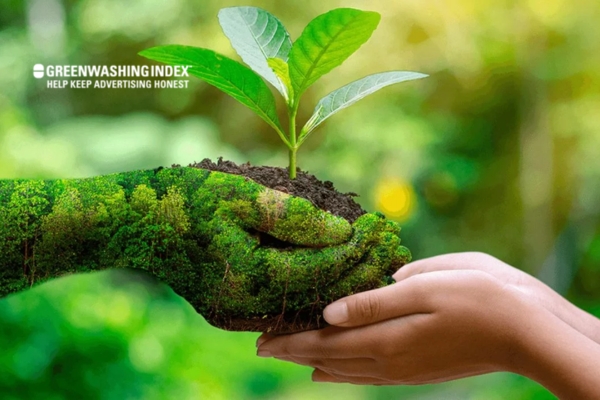
Let’s talk about how we need the environment to survive.
First, think about water. We all need water to drink. It’s simple, but it’s a big deal. Without clean water from rivers, lakes, or under the ground, we can’t live. And it’s not just for drinking. We use water to grow crops, make our clothes, and cool down big factories.
Now, what about food? To grow food like rice, corn, or tomatoes, we need land. We also need good soil. That’s where our environment comes in. Farms all over the world use land to make the food we eat every day. But there’s a catch. When we farm a lot, we can make the soil tired. The more we use it, the less it can grow things. So, we need to think about how we use soil and how to keep it healthy. That’s a big part of the human-environment interaction.
And then there’s air. Plants growing on farms need clean air. But sometimes, the air gets dirty from cars and factories. Bad air can hurt our plants and make it hard for them to grow food.
In these ways, our survival hangs on what we get from the environment – water, food, and air. But it’s not just taking; we have to give back and take care. That’s part of a bigger idea called sustainable human-environment practices. It means not using up everything today so we have some left for tomorrow.
Modifications We’ve Made: Urban Development and Infrastructure
Let’s look at the big changes we make to our world.
Have you seen a city grow? It’s like watching a puzzle being put together, piece by piece. Buildings go up where there used to be fields. Roads stretch out like ribbons across the land. All this building means we are changing nature into places for us to live and work.
This change is called urban development. It’s how we make space for more people in cities. We build homes, schools, and stores. But to do this, we often have to change the land. Hills might be flattened and valleys filled in. We can even change the path of a river to put a building where we want it.
And then there’s the roads, bridges, and tunnels – that’s the infrastructure. Infrastructure is like the bones of a city. It holds everything up and connects one place to another. We build roads to drive on and bridges to cross rivers.
Changing the environment to make cities and roads is a big deal. It can hurt plants and animals that used to live there. It can also make changes to the weather. Have you heard of a heat island? That’s when a city is hotter than the places around it because it has so much concrete and so few trees.
Urban development and putting up infrastructure show us how much we can change the environment. It’s a strong kind of human-environment interaction. But just like with farming, we need to think about tomorrow. We have to build in a way that’s best for nature, too. That means thinking about the environmental impact assessment – checking how our buildings and roads will affect the land and the air.
In these examples, whether it’s how we use resources or how we build cities, we see that human-environment interaction is all about balance. We depend on the environment, but we also change it. We need to keep looking for the best ways to live with our world so it stays healthy, and so do we.
Also Read: Composting Cheese: Can It Be Done? Complete Guide
The Cost of Neglect: Negative Human Environment Interaction
When we talk about human-environment interaction, we often think about how we live with nature. But sometimes, we don’t care for it like we should. This can lead to harm that affects us all. Let’s look closely at a few examples where not taking care can have serious consequences.
The Toll of Deforestation: A Crucial Example
Deforestation is a big problem that shows both how much we depend on the environment and how we change it in ways that can hurt us later on. Trees are cut down for many things: wood to build homes, paper to write on, and land for farms. But when we take away trees, we cause a lot of problems. Trees are like the earth’s lungs—they clean the air and give us oxygen to breathe. Without them, the air gets dirty, and our health can suffer.
When we cut down forests, animals lose their homes, too. They might die or come closer to cities, which can cause more problems. Plus, trees help the soil stay healthy. Without them, rain can wash the soil away, and farms won’t do as well.
Here is what happens when we don’t think about the future and keep cutting down trees:
- We lose the clean air that trees give us.
- Animals might die or come too close to our homes.
- Rain can wash away the soil, so it’s harder to grow food.
It’s like when we break something we need and can’t fix it again. We have to take care of the trees and forests so they can take care of us.
Overexploitation of Water Resources
Water is something we all need every day, but sometimes we use too much or make it dirty, which can cause big problems. We depend on water for drinking, growing food, and keeping clean. But there’s only so much clean water on earth, and when we use too much, there may not be enough for everyone.
We also have to keep the water clean. But sometimes, factories put dirty stuff into rivers or lakes, which can make the water dangerous to drink or swim in. Even the things we use in our homes, like cleaning products, can end up making water dirty.
Here are the ways we can use too much water or make it dirty:
- Taking more water than what is needed, leaving too little for others or for nature.
- Letting dirty things get into the water can make it unsafe.
- Wasting water in our homes by not fixing leaks or using too much for things like watering plants.
We need to think about how to use water wisely so that it’s there when we need it and it stays clean for us and the animals that depend on it.
Reckoning with Our Energy Appetite
We love to have energy to light up our homes and power our cars, but getting this energy can harm nature. Most of this energy comes from things under the ground like coal, oil, and gas—these are called fossil fuels. Getting them out can mess up the land and water nearby.
When we burn these fuels for energy, it hurts the air, too. It’s like a car’s exhaust—it makes the air smoky and hard to breathe. Plants, animals, and even we can have a hard time living if the air is too dirty.
Here is what our need for energy can do to the land, water, and air:
- Digging for fossil fuels can make holes in the land, which can hurt plants and animals.
- Sometimes, bad stuff from digging can get into the water and make it dirty.
- Burning fossil fuels makes smoke that can make it hard to breathe and change the weather.
It’s a bit like eating too much candy—it feels good now, but later we might get a stomachache. We need to find better ways to get energy without hurting the earth. That way, we can still have lights and cars without making the planet sick.
In all these ways—cutting down trees, using too much water, and using a lot of energy from fossil fuels—we see how our choices can make bad things happen to the environment. If we don’t change how we do things, our world can become a harder place to live in. But if we take care of the earth, the earth will take care of us. It’s a partnership, and we need to make smart choices to keep it strong for a long time.
Also Read: Solar Power Basics: Unlock Clean Energy Mysteries!
Steering Towards Synergy: Positive Human Environment Interaction
Understanding the ways we interact with the world around us is a big deal. One good type of human-environment interaction is when we team up with nature instead of going against it. Let me tell you more about how people are doing just that.
Embracing Renewable Energy Solutions
So, let’s talk about power – not the kind you use to lift weights, but the stuff that lights up our homes and keeps our phones charged. Using renewable energy is a smart way to show positive dependence while making changes for a better environmental friendship.
- Why Go Renewable?: First off, getting energy from sources like the sun and wind means we’re not using up stuff that will run out one day (looking at you, oil). Plus, this doesn’t pollute our planet as much.
- Solar Power Love: Think about solar panels soaking up all those rays. This is clean power coming straight from the sun that never says “I’m done.”
- The Wind Wonders: Then there’s wind energy. Big fans in fields or on hills spinning around to make power without any dirty smoke.
- Benefits All Around: Investing in these kinds of energies means less junk in our air and water — which keeps us healthier and helps our animal pals, too.
By using renewable sources like sunlight and wind, we’re leaning into Mother Nature’s strengths instead of messing with things too much. It’s like stirring just enough sugar into your tea — not so much it spoils.
Urban Green Spaces And Their Impact
Moving on, cities can be tough places with lots of buildings and concrete everywhere. But squeezing green spots into cities does wonders for both people living there and Mother Earth herself.
- Little Oasis: Picture this – little parks scattered around bustling cities where trees stretch their arms wide open under the sky.
- Cleaner Air to Breathe: These spaces gulp down pollution like a cold drink on a hot day – giving back breezes that make your lungs sing with joy.
- Happy Minds & Bodies: Folks find peace walking on grassy paths or sitting under leafy shade — their minds get as refreshed as their selfie game.
Adding these pockets of green goodness helps folks adapt to city life while giving back some love to nature right where they live. It’s like planting flowers in an old boot; small change brings beauty out unexpectedly!
Championing Conservation Efforts With National Parks
Now let’s chat about big, beautiful spaces called national parks where nature still runs wild, showing us how protecting what’s wild can mean living alongside it without causing harm.
- A Wild Home Preserved: Picture vast lands guarded like treasures so plants, critters, and rivers keep doing their thing without getting ruined by bulldozers or factories.
- Walking Gently Together: These parks teach us how to hang out in nature without leaving huge footprints all over it — more hugging trees than breaking branches.
Protecting these special spots shows we can grow together with nature’s own rhythm rather than forcing it to dance only to our tune. Think of parks as secure treehouses perched high—guarding everyone inside but staying friendly with the forest below.
So here you have three powerful examples of how people are getting along better with planet Earth through renewable energy sources, green spaces stretching within concrete jungles, and national park wonderlands standing tall as symbols of guarded growth.
Each step towards positive human-environment interaction creates harmony between society’s demands and ecological needs—kinda like hitting just the right notes for both earth tunes and human melodies.
Conclusion
After exploring the many shades of human-environment interaction, it’s clear that our daily lives are deeply entwined with the natural world. Our decisions have far-reaching impacts, from the resources we harvest to the energy we consume. As we recognize the environment’s influence on us and our impact on it, we see that the path forward must balance our needs with the planet’s health.
Living harmoniously with nature isn’t just idealistic; it’s crucial for our survival and well-being. By fostering sustainable practices and valuing adaptation, we can craft an enduring legacy — a world where humans and nature flourish together.
Key Takeaway Points
- Human activity profoundly affects our planet’s ecosystems.
- Dependence on natural resources requires sustainable management.
- Environmental modifications hold both progressive and damaging outcomes.
- Adaptive strategies are essential for coexisting with changing environments.
- Positive interactions promote conservation and renewable solutions.

